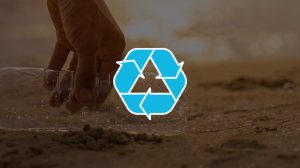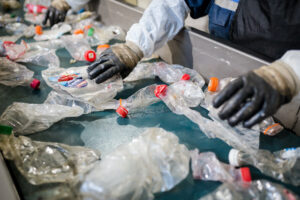The rise and fall of the metal straw—and the reusables vying to take its place
John Borg, founder and CEO of Eco Imprints and Steelys Drinkware, has been selling reusable straws for more than a decade, as one of the first wholesale suppliers. The early years were slow. In 2008, Borg had just a handful of restaurant clients and regulars. But one viral sea turtle would change everything.
“That video became a turning point that resonated with people,” he told Retail Brew. Straws would go on to become a rallying cry for sustainability and a symbol of corporate “activism.”
Remember when? The year is 2018. Your Facebook newsfeed serves up a devastating video of a sea turtle with a plastic straw puncturing its nose. The internet voices are telling you to cut your straws into small pieces before recycling them. (You’re confused by this roundabout solution, but sure.) Celebrities join the #StopSucking campaign against single-use straws. People start touting the benefits of metal sippers, cities pass plastic bans, and Starbucks rolls out new “sippy cup” tops.
But with all the fundamental changes needed to make the food and beverage industry truly sustainable, why straws?
“It was something that caught people’s attention, and from a retailer or restaurant point of view, it was easy to make that change,” Kearney Consumer Institute Lead Katie Thomas told Retail Brew.
- Giants like Disney, American Airlines, Hilton, Hyatt, and Marriott International quickly promised to ban (or “limit”) plastic straws.
- Meanwhile, a portion of Starbucks’s $1 billion Sustainability Bond went to replacing plastic straws with “greener” (but still plastic) cups.
- Borg’s company sold more than a million steel straws by 2019.
“Straws are, in the grand scheme of plastic pollution, a drop in the bucket,” Borg admitted. “But it’s low-hanging fruit.” An estimated 8.8 million tons of plastic spill into the oceans every year. Straw bans have hardly made a dent.
Slipped up: Yet, just as fast as our paper straws turned soggy, the “movement” became a fad. By 2019, metal straws were deemed a “fatal” hazard (plus: hard to clean, inconvenient, and inconsequential). Thomas put it bluntly: “What you’re seeing now is the death of metal straws.”
“The reason these things don’t stick is precisely because…consumers don’t want to have a less functional product,” she said. “There’s a threshold.”
That’s one reusable lesson for the new crop of sustainable straw startups.
The last straw?
Competition is fierce in the reusable straw space. Some companies are betting on materials like bamboo, hay, and sugarcane to replace plastic suckers. SoFi Paper Products, on the other hand, wants to fix the flimsy paper straw.
Paper is behind the fastest-growing segment of the global reusable straw market, per DataM Intelligence. The paper straw market is predicted to hit $1.6+ billion by 2024, up from $585 million in 2019.
Meanwhile, the global plastic straw market, estimated at $11.3 billion in 2019, will fall to a market value of $3+ billion by 2027.



